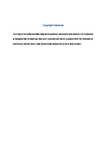Intrinsic Control Strategies for Herpesvirus-based Vaccine Vectors
| dc.contributor.supervisor | Jarvis, Michael | |
| dc.contributor.author | Alqirbi, Hujaz Ismail Abdulrazzaq | |
| dc.contributor.other | Faculty of Health | en_US |
| dc.date.accessioned | 2020-08-06T06:43:41Z | |
| dc.date.issued | 2020 | |
| dc.identifier | 10444384 | en_US |
| dc.identifier.uri | http://hdl.handle.net/10026.1/16134 | |
| dc.description.abstract |
Herpesvirus-based vectors have been used in vaccine strategies to target zoonotic diseases such as Ebola and human monkeypox, through eliciting a highly immunogenic response. We are investigating strategies to attenuate the virus and control its ability to replicate and persist, while maintaining its ability to elicit protective immune responses. In this project we have investigated three distinct and innovative means to provide intrinsic control of herpesvirus-based vectors. The first strategy is based on deletion of a gene essential for viral latency to modify persistence in vivo. Studies by Thirion et al have shown that the bovine herpesvirus 4 (BoHV-4) ORF73 gene product is required for persistence through enabling episome tethering to mitotic chromosomes. The first aim of the project was to investigate the ability of a latency-defective BoHV-4 Δ ORF73 vector expressing heterologous antigens to induce immune responses. Four recombinant defective BoHV-4 Δ ORF73 vectors, each expressing different heterologous target antigens, were constructed. One of these constructs, which expressed a target antigen from Mycobacterium bovis, was tested in vivo. The results showed the attenuated version of BoHV-4 Δ ORF73 was able to induce an immune response against its heterologous antigen. The second attenuation strategy was based on modulation of viral replication fidelity through mutation of the viral DNA polymerase. Based on a substantial body of published work from other laboratories studying the impact of genome replication fidelity on RNA viruses, we hypothesized that the genetic reduction in the fidelity of human cytomegalovirus (HCMV) replication would introduce an unsustainable level of mutations during replication of the virus, and thereby eventually result in 'genomic catastrophe' and demise of the virus. The aim of this second part of the thesis was to characterize a HCMV that has been modified through deletion of an aspartic acid residue 413 of domain II of exonuclease region in CMV DNA polymerase, designated HCMVUL54(ΔD413). Based on the proposed function of this domain in ‘proof-reading’ during virus DNA replication, it was hypothesized that this mutation would result in a decrease in the fidelity of the virus, leading to the accumulation of deleterious mutations and loss of fitness. Data presented in the thesis showed that HCMVUL54(ΔD413) had an accumulation of mutations consistent with an increased mutation rate and lower fidelity. The final attenuation strategy was based on engineering viruses in which the transgenes are flanked by identical regions. It was hypothesized that the presence of these flanking duplications will target intervening regions for genetic deletion. In contrast to the strategy based on fidelity and genomic catastrophic demise of the virus, this strategy aims to restore to recombinant virus to that of the wild type (WT) virus by facilitating excision of the heterologous transgene. Rather than intrinsic control of the CMV virus itself, this strategy is based on providing kinetic control over stability of the heterologous transgene within the recombinant virus. We hypothesized that the presence of a transgene between two homologues flanking regions would lead to its excision from the recombinant virus and restoration of the WT virus. We further hypothesized that the rate of loss of the heterologous transgene would be regulated by the length of the homologous flanking region. | en_US |
| dc.description.sponsorship | Iraqi ministry of higher education and scientific research | en_US |
| dc.language.iso | en | |
| dc.publisher | University of Plymouth | |
| dc.rights | Attribution-NonCommercial-NoDerivs 3.0 United States | * |
| dc.rights.uri | http://creativecommons.org/licenses/by-nc-nd/3.0/us/ | * |
| dc.subject | Herpesviruses | en_US |
| dc.subject | Viral vectors | en_US |
| dc.subject | Vaccine | en_US |
| dc.subject | Intrinsic control strategies | en_US |
| dc.subject.classification | PhD | en_US |
| dc.title | Intrinsic Control Strategies for Herpesvirus-based Vaccine Vectors | en_US |
| dc.type | Thesis | |
| plymouth.version | publishable | en_US |
| dc.identifier.doi | http://dx.doi.org/10.24382/627 | |
| dc.rights.embargodate | 01/09/2022 | |
| dc.rights.embargoperiod | Extended | en_US |
| dc.type.qualification | Doctorate | en_US |
| rioxxterms.funder | Not available | en_US |
| rioxxterms.identifier.project | Not available | en_US |
| rioxxterms.version | NA |
Files in this item
This item appears in the following Collection(s)
-
01 Research Theses Main Collection
Research Theses Main



